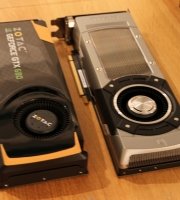
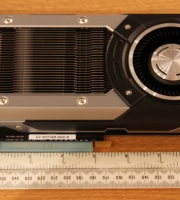
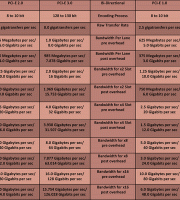
As 2014’s second quarter neared its end, any owner or craver of a smartly priced desktop build with endless scope for future expansion was either more satisfied than a feline by the fireside, or spoilt for choice than a Butcher’s Braid.
The preceding two years had witnessed Baron von Intel lovingly tailor a tantalizing trio of chipsets, each with accompanying processors, to entice his mainstream customers. The z77 materialized in mid 2012, playing host to its mercurial and eco-friendly “ivy Bridge” family. The following summer gave rise to the z87 and “Haswell”, a fourth cocktail of core technology further improving performance, efficiency and features.
A year later more spoils were heaped on the mainstream masses as the z97, another “Haswell” hostel was erected, with two rooms promptly occupied by Mr and Mrs Devil’s Canyon. A duo of extra spicy editions of Intel’s 22nm “Haswell” processor.
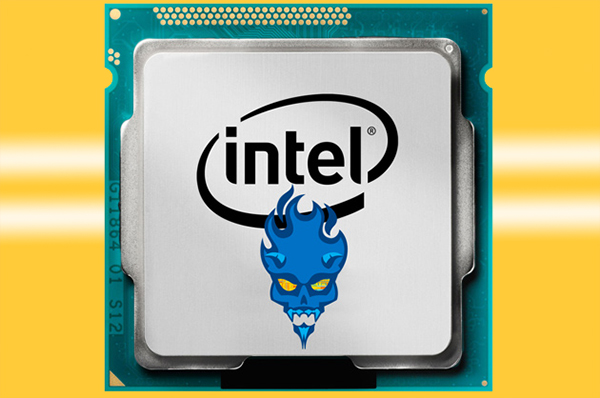
The recipe, a potent mixture of extra capacitors, improved thermal interface material and in the case of the superior of the two, a quartet of hyper threaded cores attaining record shattering stock base and turbo frequencies of 4 and 4.4ghz. A leap of close to 15% over the fleetest traditional “Haswell”, the i7-4770k.
Innovative and ambitious motherboard renderers became ever more voracious in their desire for accolades and profit, slicing the market with surgical precision and relentlessly targeting each segment.
Meanwhile, another expectant faction of equally loyal customers waited patiently to be served. These, the “Enthusiasts”, had been granted a solitary chipset almost three years earlier, the x79 and amidst such a hive of mainstream activity, even the most profligate might question whether processors bearing the letter X or motherboards the words “Black Edition” guaranteed the same exclusive enhancements over such a rich assortment of “second division compromises”.
One may well ask how this situation came to pass. The process was the same as it had been for years. Our chip chucking compadre released a fresh or refreshed design, along with guidelines of how it was to be implemented.
The z87 however, introduced a notably less stringent key component, the Platform Controller Hub or PCH. The chip itself was nothing original and had been an inevitable part of Intel’s designs since 2008. But it was this revision which allowed for manufacturers to more freely allocate important resources within the chipset at the time of integration as opposed to having them pre-determined by Intel.
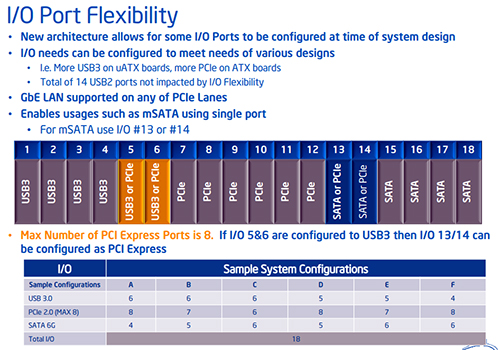
Spare PCI Express Lanes for instance, a traditional mainstream scarcity, could be designated to support extra USB 3 or SATA 6G ports or provide additional bandwidth to PCI Express slots. The principal was known as Flex I/O.
It was surely this which, when combined with the availability of sensational feats of micro engineering beyond Intel’s control, that permitted ravenously competitive clients such as Asus, Asrock, Gigabyte, MSI and others to formulate copious and eclectic methods of transforming a relatively spartan specification into a feature adorned, range topping slab of PCB heaven. A fitting example can be observed below:
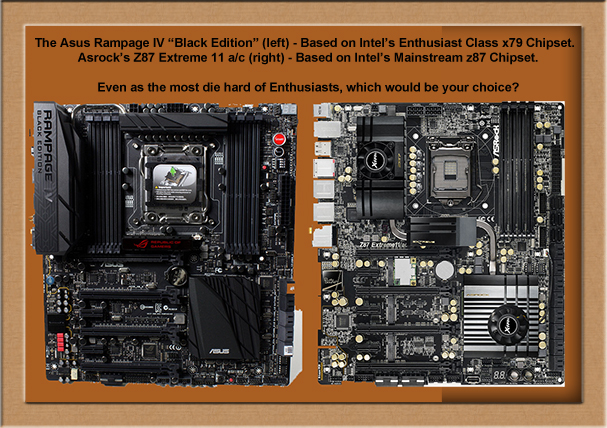
On the right is the Z87 Extreme 11 A/C from Asrock, released as 2014 commenced. Beneath reams of glittering heat sinks and undulating rivers of circuitry, it did indeed harbour Intel’s basic chipset design, a design that warranted no more than x16 PCI-E lanes from the CPU and a further 8 from the PCH….and yet, we are examining a board boasting a quartet of full length, maximum bandwidth PCI-E 3.0 slots along with an breathtaking brigade of 22 sata ports. Where was all this extra bandwidth coming from? Nowhere, there wasn’t any, there was only one of these:
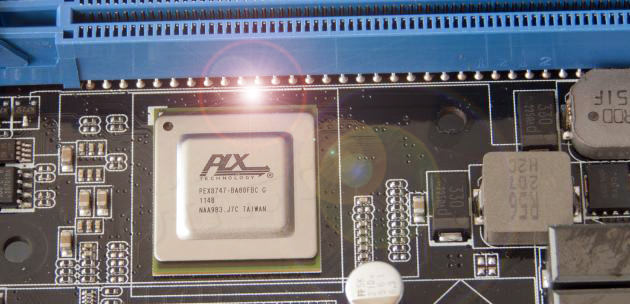
The PEX 8747, a chip manufactured by PLX, a company with no statuary obligation to Intel or any other.
An acceptable analogy might be to suggest that installing this chip on a motherboard is akin to having a super intelligent octopus directing traffic at a crowded intersection, the roads are not widened, the traffic is simply managed so efficiently that nothing ever grinds to a halt. In brief, this creation could ingeniously manipulate and deploy any chipset’s inherent bandwidth to wherever and whenever it was most beneficial with results stunning enough to enable Asrock and others to integrate an abundance of desirable bonus features.
By comparison, the motherboard on the left is Asus’s Rampage IV “Black Edition” is based on Intel’s Enthusiast class x79 chipset – six months the z87’s senior – and was released. The board itself was released a mere month prior to the Asrock. The most powerful CPU it could host was the six core 4960X.
And yet Compared to the Asrock married up to a 4970K Devil’s Canyon, it lacked thunderbolt support, Quicksync technology, had no native USB 3.0 controller and only two native SATA 6G ports.
It might well have offered quad channel memory, greater inherent PCI-E bandwidth, and even sported the same PLX chip as the Asrock. Though in all but a few applications that fully exploited all twelve of the Ivy Bridge-Es data crunching threads, it provided inferior performance. One might think it a little unfair to compare a newer mainstream platform with an ageing one for the enthusiast, though a six month interval between designs is hardly an eternity.
Thus, a worthy argument could be made that where the X58 had kept Enthusiasts satisfied for three of the Earth’s turns around the sun, it’s successor had initially been greeted with scepticism and surpassed in performance and value well before its abdication, by a progressively luxurious mainstream product line.
What if anything could Intel do to ensure a decreasing and disgruntled mob of Enthusiasts would once again be prepared to bust the bank in the name of pride?
August’s windy twilight bore witness to a seductive swath of masterful motherboard moulding from Intel’s carnivorously competitive majors in command.
With the ageing and some would claim, ailing x79 finally encountering a nemesis more keenly awaited and sonorously sensationalized than many enthusiasts would have thought possible when last parting their purse strings, it was little wonder that the Haswell-E’s honeymoon haven drew forth inspired innovation and stupendous functionality in delightfully decadent deluges of PCB porn.
Yet, on the eve of the x99’s embargo being raised, I couldn’t help but feel as a humble hobbyist how tough it had become to harvest reams of relevant stats and helpful observations, then impart them succinctly and imaginatively enough to engage fellow “speed” addicts who had likely ingested all such information an eternity of embargoes ago.
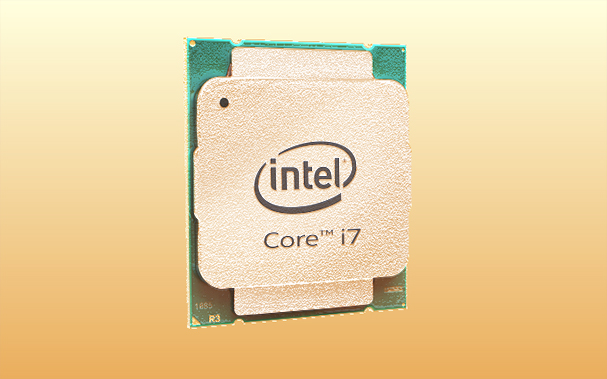
Not for a minute would I tearfully reminisce over the days when ponderous paper launches gifted all “accredited” press and the best heeled hardware hacks the luxuries of touching, tasting and telling in unjust advance of penniless but genuine scholars of technology.
But in an age when the lines between ceaseless social networking and a desperate hunger to be branded a trend setting news bearer grew finer than chinchilla fur, a fresh force of resource laden review sites had raised the stakes.
Articles dozens of pages long crammed to the hilt with fancy flash flora aptly depicting data from every benchmark deemed useful – and many more besides – were surgically prepared by hoards of hot shot tech journos weeks in advance of worthless NDAs, leaving those less well connected floundering helplessly in a wake of silicon dust.
In spite of this desperate lament, the concurrent emergence of free and powerful methods with which to self publicise, could be said to have aided these independent coveters of componentary, stimulating their untapped creativity and generating sources of joyful jargon as immediate, enriching and arguably more engaging then any professionally compiled equivalent.
A polished unboxing showcase shot with more angles than a dodecahedron, an elegantly composed split screen comparison conveying the contrasting potential of cutting edge consoles or, with matters in hand beginning to press, a knowledgeable series of prophesies pertaining to the probable perks of a fresh and ravenous pack of Haswell-E Huskies.
Why should a perfectly healthy right to reap or refuse a liberal supply of advanced knowledge sully the age old and welcome tradition of heated hardware debate and a goodly dose of graph gazing?
On the crest of that positive, what of this freshly spun trio of “extremists”?
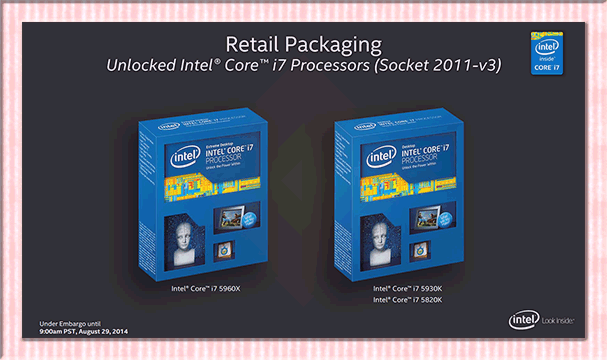
In light of the plethora of admirably meticulous reviews and a personal lack of pertinent hardware, it would be arrogant to assume any reader….oh….wait…..you’ve gone already? Wait! One moment, what about a delicious deep fried table, oozing with molten chocolate, with a delicate sprinkle of sweet statistics? Go one, just before you swan off for that Honey Roast Hawell?
Well, its coming besides, along with a crescent of chunky charts filled with a deliciously flavoursome fact and figure sauce, I dare you to resist.
Representing a die deafening “TOCK” on professor Intel’s roadmap to silicone sainthood, the x99 with triad of extreme Haswellery should have excelled on all fronts – not least those where the x79 had flattered to deceive – realising every Enthusiast’s earnest wishes and igniting the convincing revival of a market whose existence might soon have become decidedly tenuous.

At first glance, the socket – traditionally novel following an architectural shift – bore as much similarity to its forerunner as imaginable. We have reflected on how the end of 2008 witnessed Intel’s introduction of separate sockets for its mainstream and enthusiast customers, but where the former group’s transition from Sandy Bridge to Haswell included notable physical updates, the latter’s were virtually non-existent.
We had known for months of Intel’s intentions to retain the 2011 design for its Haswell Heavyweights, but identifying any distinctions might have proven an impossible challenge were it not not for a crafty re-christening.
At the risk of slight deviation, the image above depicts four “Xeon” CPUs, processors targeted at businesses and engineered to thrive in resource hungry workstations and servers, alongside two more familiar I7 “Extreme” chips aimed at our consumer enthusiast.
The Ivy Bridge EP succeeded the Sandy Bridge-EP just as the Ivy Bridge-E had dethroned Sandy Bridge-E. All four of these parts were interchangeable, provided the motherboard manufacturer supplied a supporting BIOS.
In contrast, despite being physically installable in the same socket, an Ivy Bridge-EX chip would only operate in server-class motherboards with a minimum of two sockets and a maximum of thirty two!
Lastly, the Haswell-EP, another Xeon part, featured Intel’s revised design entitled “Socket 2011-3″, the same as the consumer oriented Haswell-E and once more, both CPUS were interchangeable when afforded a compatible motherboard and BIOS.
In examining all three interpretations, especially the Ivy Bridge-EX and Haswell-EP, their dimensions were identical, the spacing between each tiny hexagon or “ball pattern pitch” matched exactly, even the number of contacts was the same but their electrical layout and PCB’s keying (the notches on the upper and lower edges) had both been subtly altered.
Not since the ubiquitous LGA 775 had the company’s partiality to a pin pattern so permeated its product lines and by all accounts, would continue to do so throughout the subsequent two years.
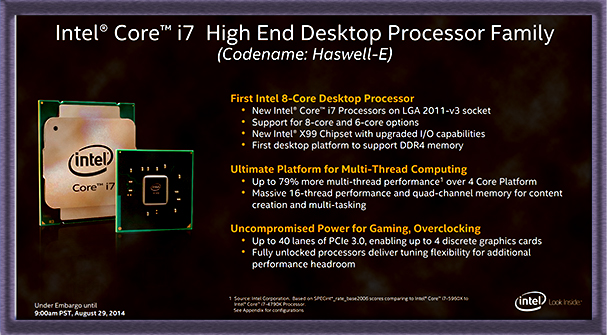
Humble Customer: May it please my lord and master Intel, but I have just acquired a Z-68 motherboard from one of your appointed Generals, Asrock, it is inscribed “Gen 3”, am I bound to savour the princely pixel pioneering of Nvidia or AMD through the powers of PCI Express 3.0?
Lord and Master Intel: Hmm, well, so long as Ivy has supplanted Sand and ensured those barren lanes now flower…then, yes.
Humble Customer: May it please my Lord and master Intel, but I have cast my hard earned cash away upon a two Flagships. The first, from another of your proudly ascribed interpreters, Asus, bears the esteemed engraving, x79 and the second, a processor of your own ingenious forging, the 3970x. Am I to be blessed with the bandwidth that can bolster my dreams of a PCI Express 3 paradise, a glowing graphical utopia and slots of searingly swift SSDs?
Lord and Master Intel: I shall utter nothing about the potential of such past machinations, delightful though they might be. The sole means by which to realise your chosen destiny is to cultivate Ivy…..to Bridge over the Sandy chasm, seek the numbers 4, 9, 6, 0, then…as ever, X shall mark the spot.
Humble Customer: Right, so basically another $1000 CPU then.
Lord and Master Intel: A waiter’s tip for the seasoned enthusiast?
Humble Customer: What about that patch from Nvidia, that just enables PCI-E 3.o for no dollars?
Lord and Master Intel: Ahh yes, the one of which old Green Eyes advised, “Use only if stability is not absolutely crucial, or if the hardware is not operating in a mission-critical environment.”?
Humble Customer: That’s the one.
Lord and Master Intel: Read between the lines my friend, he’s saying…apply at your own risk….your own peril. The peril of extinguishing all vestige of inner peace. The risk of raising a personal Hell, of reducing your house and family to ash…!
Humble Customer: Well, I live in rented accommodation, I’m moving next month, my insurance is solid and my family only bother me at Christmas so…
Lord and Master Intel: The risk of your system spontaneously rebooting when on the verge of exquisitely brutal triumph in a Battlefield team deathmatch…
The point of that flippant hypothetical was to emphasise the first encouraging trait of the Haswell in its heartiest form. Following a trail of tedious ambiguity, it was now impossible to invest in a new platform without Intel’s promise of a paramount PCI experience.
Enthusiatsts and Maintreamers could now happily stand alongside each other as fully certified beneficiaries of the protocol’s third incarnation.
Let’s allow that pronounced and spirited upbeat to assail our senses with the main course of core truths. Here it is, as promised, the redoubtable tool of quick reference…chocolate table time!
Immediately apparent was how consistent things had remained and if Intel’s ardent 2011 socket affair did little to clarify the Enthusiast’s shopping list, at least their naming convention displayed a logical pattern.
The Ivy Bridge E’s number four was replaced by a five, denoting the new Haswell, with the remaining three numbers unaltered in all three cases. In keeping with “extreme traditions” these blue chip Haswell’s exhibited unlocked multipliers with no exception and comprised of one “budget” CPU, the 5820K, a middling 5930K and an inevitable crown jewel, the I7-5960″x”.
When comparing the chips directly to one other, several intriguing discrepancies were evident.
While the cheapest of our abdicating Ivy’s (the 4820k) juggled with two less cores and a smaller serving of L3 cache than either of its dearer elders, in the Haswell household, the baby of the bunch matches its medium brother’s core, cache and thread tallies but in a cheeky display of carrot and stick, Intel elected to cut its PCI-E lane quota from 40 to just 28, perhaps considering that the abundance of mesmerically pacey video cards and likely-hood of a cyclonic SSD revolution had rendered native PCI-E real estate a more precious resource and hence, greater financial incentive to the average Enthusiast than genetic multi-threaded brunt.
Also manifest was Intel’s desire for the family’s Big Daddy to revel in exclusivity, principally as first ever octocore CPU to tantalize the consumer and one with a 20mb cache reserve to boot, still feel short changed?
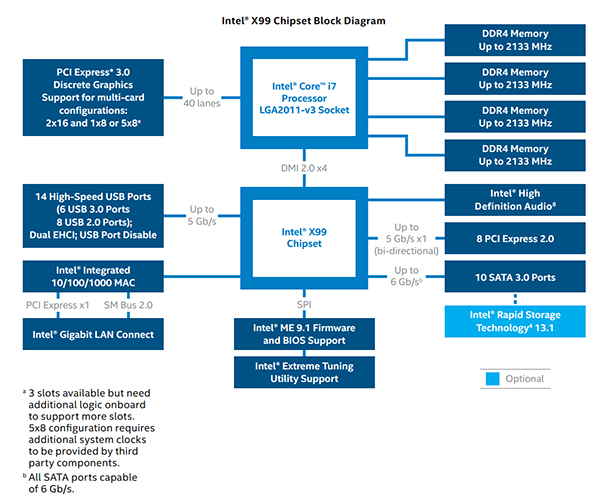
And last we could observe this all telling slide.
Forty luscious lashings of PCI-E nectar delivered fresh from the CPU* to nourish noble and honoured GPU guests in a similar vein to the x79 but on this glowing dawn, glorious full fat triple revision richness, officially endorsed by Intel and absent of fiddly fallible patches from Nvidia. Eight additional PCI-E 2.0 lanes the served up by the south bridge* permitted manufacturer’s the same allocation liberties of the z87 and 97.
In light of the additional bandwidth supplied by The CPU, these handy B roads were free to cater for a combination of 10 in house Sata III ports, a union of 14 USB ports including, at long last, up to six members from its third and finest order primed for native action with eight staunch second division scouts bringing up the rear and finally, an integrated M.2 socket and/or SATA Express port, each furnished with the benefits of Intel’s Rapid Storage Technology.
*28 lashings if one opted for the 5820k, foot note inserted here so as not to spoil a wonderfully alliterative sentence.
* Known as the PCH, foot note inserted here for reasons given above.
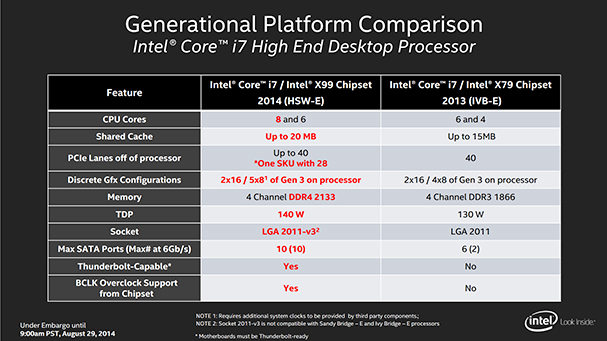
Rounding off the list of noteworthy spoils was the fervently anticipated support for DDR4 modules, whose introductory speeds of 2133mhz were handsomely complemented by a recurring quad channel memory interface.
The continued omission of of Quicksync technology was a major disappointment. Many argued it remained a mainstream exclusive due to the Enthusiast’s perpetual penchant for a pixel macerating monolith over any integrated alternative, and that the Sandy, Ivy and Hawell E’s greater core tally and PCI-E bandwidth far better served the needs of a voracious videographer.
Nevertheless, as an ardent Edius user, it was posts akin to the one on this forum that persistently invoked my curiosity and aroused suspicions of falsehoods originating from the loudest and most bitter.
But why shroud ourselves in doubt and negativity. On paper the x99 expunged every weakness that provoked the x79’s most vociferous critics.
It was time for high stakes in the real world. In multi-threaded, memory intensive applications a regular Haswell 4770k sprinting at 4.5ghz and close to his OC limit, would still fail to haul in an ageing Sandy Bridge-E 3970X on his casual 3.5ghz training ride, hence, to envisage a walkover would be naive indeed.
With Intel soon to insist we broaden our vision…had the tyrannical yet indispensable Sage of Silicone perfected and exploited all he could with this, his 22nm swansong? Could the Haswell-Es, with their indisputable clock for clock superiority and, in the case of the I7-5690x, extra cores and whack of cache, negate the handicap of their lower frequencies and tear the Ivy Es from their turrets?
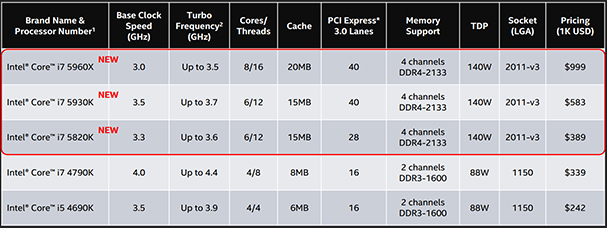
Mindlessly optimistic bandwidth junkies might have predicted a quantum leap.
But what the sagely and the smart foresaw was an incremental increase steep enough to satisfy those whose wallets swelled most, afford a dwindling contingent of disgruntled enthusiasts the same native luxuries as their over privileged and increasingly smug mainstream contemporaries and all without compromising professor Intel’s militantly choreographed roadmap.
As results surged from one weary server to the next, reality could have scarcely been defined as a wild deviation from their cynical but wise prophecy.
Let the folks who get things free sweat it out.
Here to round off your feast of enticing chip banter, are the chunky charts I pledged for dessert. The data was selected from Anandtech for the application benchmarks and Guru3d for the game benchmarks with a view to establishing the pattern of progress within Intel’s increasingly shrewd grand plan. It may prove useful to some of you one day, in a somewhat bizarre set of circumstances
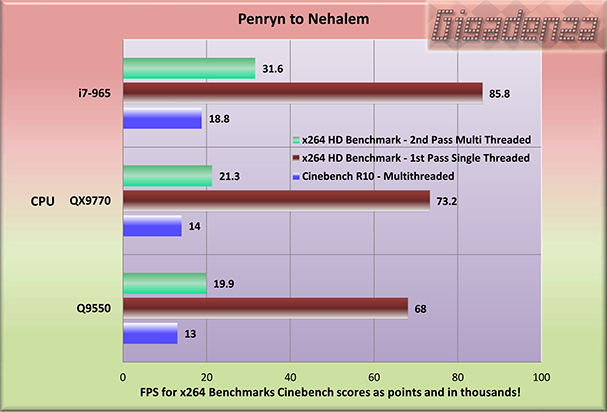
No point in spouting any further florid phraseology when a succulent pic n mic of percentages will see you out. Above we can note the transition from Penryn to Nehlam architecture returned some noteworthy gains, at least for video encoding and onerous rendering tasks.
Relative to the QX9770 and Q9550, the i7-965 emerged with advantages of 17% and 26% in the x264 single threaded pass, 48% and 59% in the multi threaded pass and 34 and 44% in the Cinebench R10 benchmark.
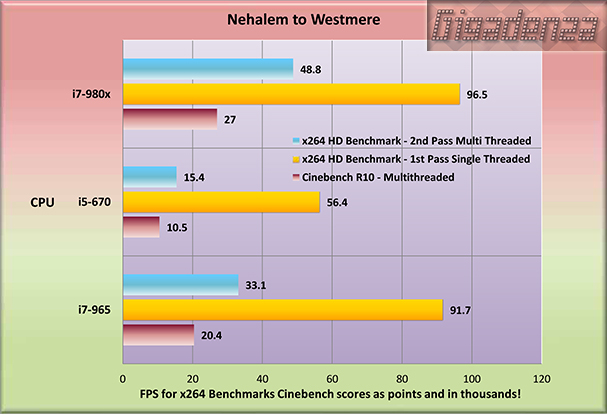
When stepping up to the socket against the i7-965, a Nehalem King and the i5-670, a Westmere courtier, we see the i7-980x command leads of 71% and 5.2% in the x264 single threaded pass, 215% and 47.4% in the multi-threaded pass and of 157% and 33% in the R10 render test. The reason for the Gulftown’s astronomical advantage over its “Clarksfield” cousin stems from the fact that all Westmere based mainstream CPUs were limited to two cores and slower than many quad core Nehalem chips, despite a lesser lust for watts.
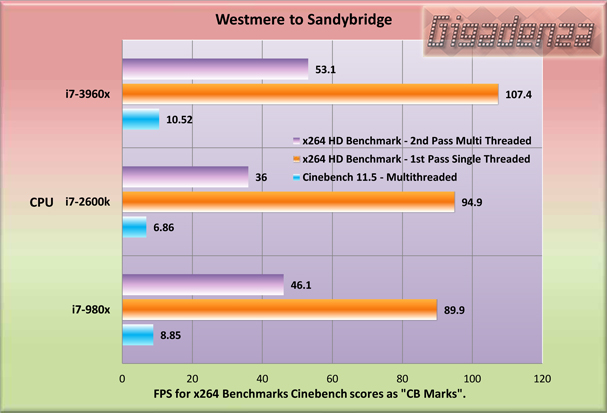
Compared to the i7-2600k and 980x, the i7-3960x exhibited 12% and 19% gains in the x264 single threaded pass, 47% and 15% in the multi threaded pass and 53% and 19% in the Cinebench 11.5 benchmark. Yes, I’m just changing the odd word now, its the figures that matter, consume them neat and with relish!
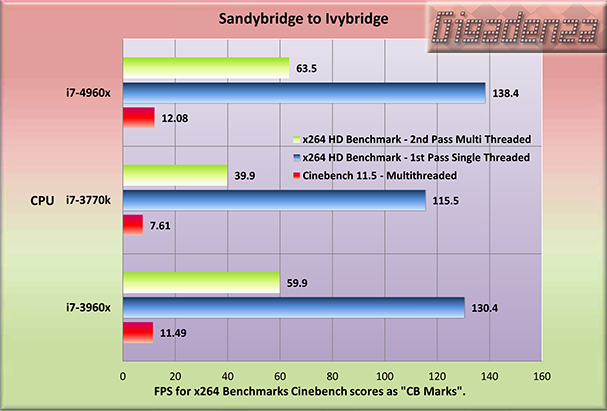
When set against the i7-3770k and 3960x, the i7-4960x mustered 20% and 6%% increases in the x264 single threaded pass, 59% and 6% in the multi threaded pass and 58% and 5% in the Cinebench 11.5 benchmark. Can you flesh out a pattern yet? Those extreme chips would appear to be adhering to the law of diminishing returns.
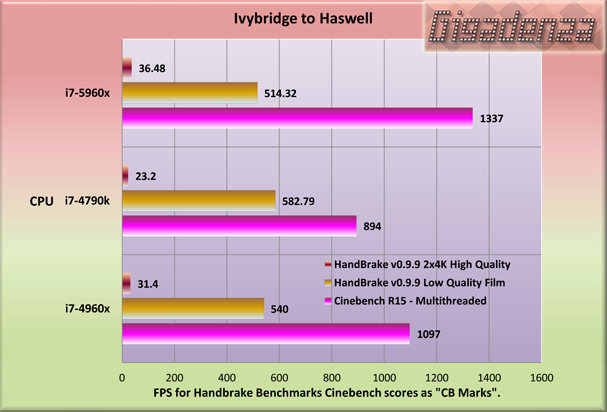
In a spot of sparring with the i7-4790k and 4960x, the i7-5960x yeilded 13% and 2.5% losses in the low quality handbrake test 57% and 16% gains in the high quality and bonuses of 49% and 22% in the Cinebench R15 benchmark. The first time an heir to the thrown suffered a loss, though his two subsequent wins were solid. Onto the gaming.
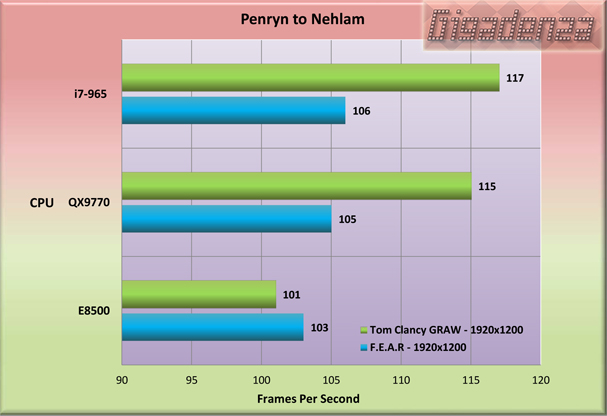
The question of whether a processor’s extra cores provide instant interest or an assured future pension in the gamer’s bank account raises forum frenzies that run long past the witching hour.
Suffice to state that in every case, for a Crysis crazy, Wolfenstein wanderer, Tomb Raider tear away or Metro Maestro, the CPU would only hinder if the GPU was able to field frames with pipelines to spare and racking ones brains to cite a period when the vast majority of popular commercial and obscure independent releases demanded anything other than gargantuan reserves of pixel polishing mastery is a tough task indeed.
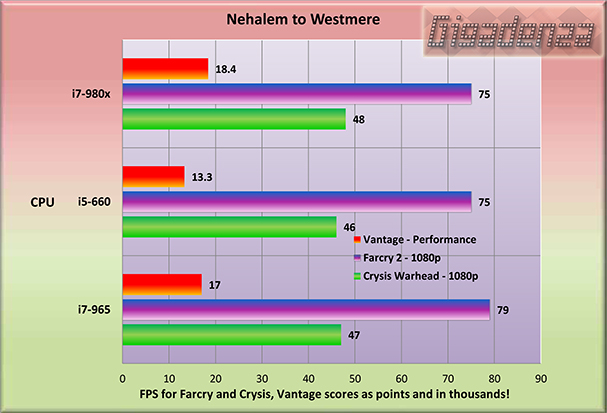
Seriously, do try it, cast your mind back as far as you can. Bring to blazing illumination the moving memories of that spiritual transition into a finely filtered third dimension. Spare deep thought for some virtuous Voodoo magic. Those cards that lay dormant during desktop duties, then lavishly ignited the screen in a gorgeous symphony of silken surfaces. Walls whose very pixels delighted in smooth and sparkling splendour, water with glossy waves of glowing pride, seductively subtle shading, ravishingly rich lighting, feverishly fluid frame rates and feasts of shimmering colour.
The Orchid Righteous? the Diamond Monster? Remember those? How about the fabled Voodoo 5 6000, that colossus that never made it to retail. I profess to wandering and shall presently, yet begrudging bring reminisces de 3DFX to a painfully clunky conclusion, though perhaps that revolutionary era, and truly revolutionary it was, has ever since governed a GPUs onerous obligations.
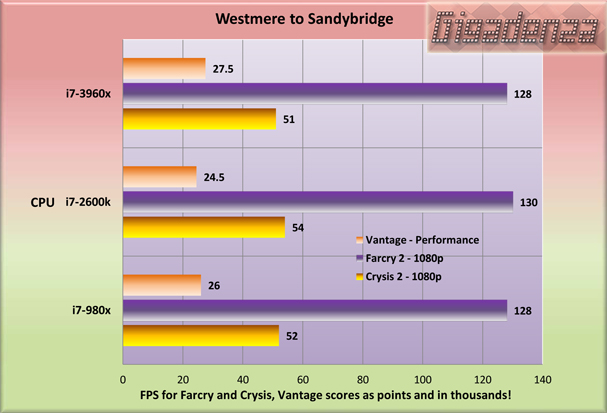
Thus, an effective way to simulate a “CPU bound” scenario is to reduce the resolution and visual allure of the game in question to levels that liberate the GPU of its duties and force the former out of its arrogant recline.
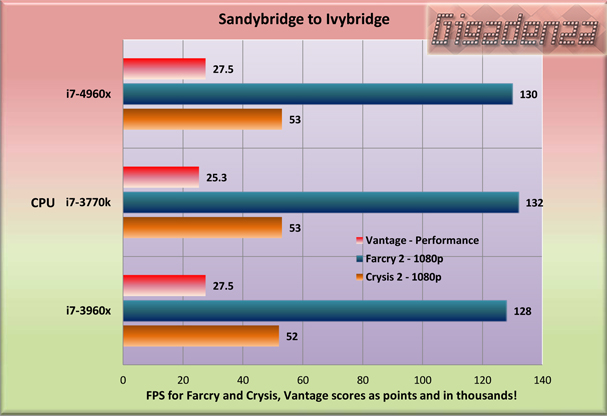
Determining precisely when the balance of power tips is a puzzle specific to each title but as you’ll gather, it’s frequently when the frame rate is astronomical enough to raise serious doubts over whether any naicent or veteran extremist would earnestly favour a 5% performance boost over, say £300 set aside for some mercurial M.2 motoring.
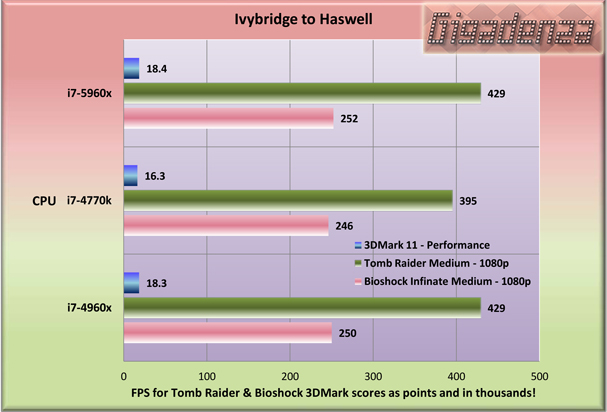
In all remaining cases, not a shred of evidence suggests a CPU’s core tally to be a critical catalyst in the pursuit of a consistently swift or smooth gaming. And now my friends, even I must profess to being a little jaded by such opulent quantities of juicy jargon. Without question, you’ll have noted from our “tick tock tour” through the node netherworld, that all but the fastest CPU in its class was omitted.
Worry not, I hear the accusations of pessimism and bias. I sense those citing my failure to eulogize over the “trendy” options, the products for half the price yet whose performance in so many tests permits the flagship no clear water. The chips for cheeky chaps and chicks, whose range for over-clocking represents ravishing value in their bid for a budget tower of power.
Does all concern the Steam fraternity, the frivolous fantasies of FPS fiends? What about the growing breed of self sufficient producers, the inspired videographers, the prolific let’s players and ebullient un-boxers of whom you spoke as this tortuous ramble took wing. Wouldn’t ye Haswell better heed their needs? No praise for the 5930k? No plaudits for the 5820k. After all, both these SKUs streak past a 3960x, a $1000 centrepiece in its time. Is this not conducive to marked improvements in efficiency, increasing returns from Intel to its most loyal customer, a golden year for the discerning enthusiast?
To dispute facts would be senseless, and those above are indeed persuasive, but lauding a contemporary mid-priced CPU for outpacing a top dog three years its senior would, ironically, serve to highlight a pattern and rationalize both my purposeful oversights and lack of exuberance. To prove any further criticism unjustified, I need only invite you to compare the powers of a i7-3930k and a i7-965 “extreme”, two more enthusiast grade processors, again separated by three years. The first the younger “smart buy” and the second the aged “crown jewel”, a familiar scenario with an outcome to match. Believe me, I’d show you first hand but I’ve no tables left to impart. Ok, to hell with it, just one for the road.
The method involved adding the test results for each “extreme” CPU in each of the eight previous tables then, in every case, subtracting the lower figure from the higher figure, dividing the result by the lower figure and finally, multiplying by 100 to in order to calculate the performance gain and preserve the relative percentages for each pair of CPUs.
The colour coding and legend show which two CPUs are being compared and the higher percentage represents the performance increase provided by the newer nodes. Random comparisons are regretfully impossible due to each group of results being independently collated and determined by exclusive tests under unique conditions. A handsome sight it may not be and it only documents the super expensive extremities, but having separate data sets for gaming, rendering and encoding applications affords intriguing evidence, not merely of the bonuses Monsieur Intel has seen fit to grant over seven gruelling years, but also of when his ticks and tocks have resounded with the clamour of Big Ben’s Chimes as or hovered on the edge of a sundial’s silence.
Finally, the relative speed and cheapness of bronze and silver siblings is little more than another constant. Remember the gamely i7-920 and how no benchmark would offer its “extreme” boss the chance to humiliate? What about squadrons Ivy-E and Sandy-E? Did lieutenants 4930 and 3930k ever disgrace themselves in training with their commanders? Listen, just purchase as you will, and may your decisions, whether influenced by this genial visit or the constructive opinions of those far more astute be wise, informed and adorn you with nothing but the wonders of building…and using.